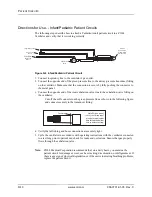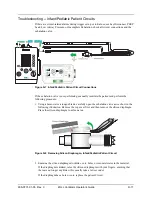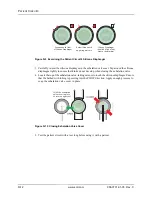
906-0731-01-05 Rev. C
ZOLL Ventilator Operator’s Guide
C-1
Appendix C
Pulse Oximeter Principles
The Masimo SET
®
MS board pulse oximeter is based on three principles:
1. Oxyhemoglobin and deoxyhemoglobin differ in their absorption of red and infrared light
(spectrophotometer).
2.
The volume of arterial blood in tissue and the light absorbed by the blood changes during
the pulse (plethysmography).
3.
Arterio-venous shunting is highly variable and that fluctuating absorbance by venous
blood is a major component of noise during the pulse.
The Masimo SET MS board pulse oximeter as well as traditional pulse oximetry determines
SpO
2
by passing red and infrared light into a capillary bed and measuring changes in light
absorption during the pulsatile cycle. Red and infrared light-emitting diodes (LEDs) in
oximetry sensors serve as the light sources, a photodiode serves as the photodetector.
Traditional pulse oximetry assumes that all pulsations in the light absorbance are caused by
oscillations in the arterial blood volume. This assumes that the blood flow in the region of the
sensor passes entirely through the capillary bed rather than through any arterio-venous shunts.
The traditional pulse oximeter calculates the ratio of pulsatile absorbance (AC) to the mean
absorbance (DC) at each of two wavelengths, 660 nm and 905 nm:
S(660) = AC(660)/DC(660)
S(905) = AC(905)/DC(905)
The oximeter then calculates the ratio of these two arterial pulse-added absorbance signals:
R = S(660)/S(905)
This value of R is used to find the saturation SpO
2
in a look-up table built into the oximeter’s
software. The values in the look-up table are based upon human blood studies against a
laboratory co-oximeter on healthy adult volunteers in induced hypoxia studies.














































